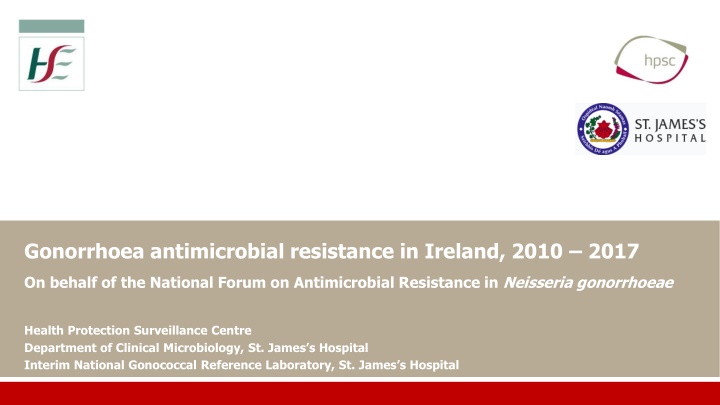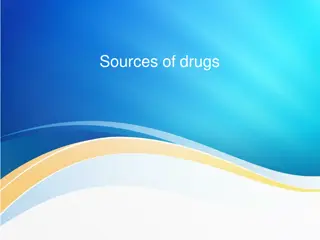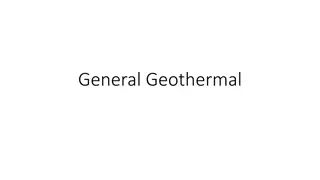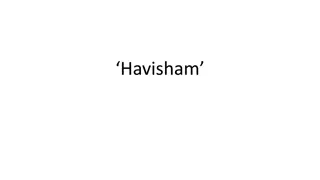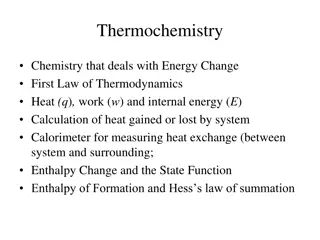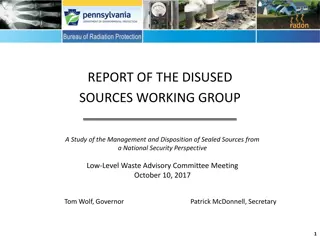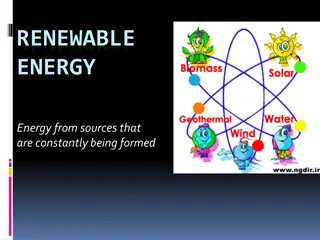Dramatic Changes in UK Energy Sources Over 50 Years
Discover the significant shifts in UK energy sources over the past five decades and explore the projections for the next 10 years. From the dominance of fossil fuels to the rising tide of renewables, delve into the complexities of the UK's energy landscape. Uncover insights on how natural gas has replaced coal, the challenges of increasing renewables, and the impact of population growth on energy consumption. Gain clarity on the country's dependency on energy imports and the commitments towards a greener future.
Download Presentation

Please find below an Image/Link to download the presentation.
The content on the website is provided AS IS for your information and personal use only. It may not be sold, licensed, or shared on other websites without obtaining consent from the author.If you encounter any issues during the download, it is possible that the publisher has removed the file from their server.
You are allowed to download the files provided on this website for personal or commercial use, subject to the condition that they are used lawfully. All files are the property of their respective owners.
The content on the website is provided AS IS for your information and personal use only. It may not be sold, licensed, or shared on other websites without obtaining consent from the author.
E N D
Presentation Transcript
Gonorrhoea antimicrobial resistance in Ireland, 2010 2017 On behalf of the National Forum on Antimicrobial Resistance in Neisseria gonorrhoeae Health Protection Surveillance Centre Department of Clinical Microbiology, St. James s Hospital Interim National Gonococcal Reference Laboratory, St. James s Hospital
Euro-GASP The European Gonococcal Antimicrobial Surveillance Programme Ireland participating since 2010 Department of Clinical Microbiology, SJH, is sentinel laboratory Participated via de-centralised testing since 2013 Interim National Gonococcal Reference Laboratory located within Department of Clinical Microbiology, SJH, since 2017 Coordinates Irish Euro-GASP submission with HPSC Data submitted annually to ECDC via TESSy by HPSC
Trend analysis of Irish data submitted to Euro-GASP, 2010 2017 4
National data, 2010 2017: Summary Data on 775 Irish isolates submitted to Euro-GASP 2010 2017 92% males, 8% females Euro-GASP guidelines recommend collecting data on 10% of the total number of cases nationally Irish data have covered 5-9% of total number of notifications
Age distribution, 2010 2017 Median age of cases: 27 years Age range: 15-65 years Median age of males: 28 years Median age of females: 23 years
Clinical service type, 2010 2017 87% attended STI clinic, 9% attended primary care
Region of birth, 2010 2017 Region of birth available for 75%, where known: 60% born in Ireland 18% born in Latin America 10% Western Europe 8% Central or Eastern Europe *Other regions include Asia, Africa, North America & Canada, the Middle East, Australia & New Zealand
Area of residence, 2010 2017 Area of residence was known for 98% of patients and 97% of patients were resident in Ireland at the time of infection Between 2010 2014, region within Ireland was not collected Between 2015 2017, 77% of cases were resident in the Dublin region
Mode of transmission, 2010 2017 Mode of transmission was available for 92%, where known: 77% MSM 14% heterosexual males 9% females
HIV status, 2010 2017 HIV status available for 84%, where known: 12% HIV positive All HIV positive cases were among MSM
Previous gonorrhoea infection, 2010 2017 Data on previous gonorrhoea infection available for 88%, where known: 21% reported previous gonorrhoea infection
Concurrent STI, 2010 2017 Data on concurrent infection available for 94%, where known: 18% diagnosed with concurrent STI Chlamydia was diagnosed in 76% of concurrent infections *Other STIs diagnosed included Herpes, Hepatitis C, LGV and Syphilis
Compliance with recommended treatment*, 2015 2017 Data on treatment used were collected since 2015 Data were available for 36%, 100% and 97% of isolates in 2015, 2016 and 2017, respectively Where known, there was 80%, 93% and 89% compliance with recommended treatment *Recommended treatment for gonorrhoea infection was changed in December 2018 to monotherapy with ceftriaxone (1g). Dual therapy with azithromycin is no longer recommended.
Cefixime susceptibility, 2010 2017 1% (n=8) of isolates were resistant to cefixime (MIC 0.125 mg/L) No resistant isolates have been reported since 2015 The distribution of the cefixime MIC ranges had decreased since 2013 100 90 Susceptible Resistant Percentage of isolates/year 80 2010 70 2011 60 2012 50 2013 40 2014 30 2015 20 2016 10 2017 0 minimum inhibitory concentration (mg/L)
Ceftriaxone susceptibility, 2010 2017 99.9% (n=774) of isolates were susceptible to ceftriaxone (MIC 0.125 mg/L) 1 resistant isolate reported in 2012 The proportion of isolates with reduced ceftriaxone susceptibility (MIC 0.032 mg/L) was 10% in 2017, compared with 7% in 2016 Susceptible Resistant 60 50 2010 Percentage of isolates/year 2011 40 2012 2013 30 2014 20 2015 2016 10 2017 0 minimum inhibitory concentration (mg/L)
Azithromycin susceptibility, 2010 2017 13% (n=104) of isolates were resistant to azithromycin (MIC >0.5 mg/L) Azithromycin resistance in Ireland has been above the European average since 2014 The proportion of isolates with MIC>2.0mg/L has ranged from 7-9% since 2015 60 Susceptible Resistant 50 Percentage of isolates/year 2011 40 2012 2013 30 2014 2015 20 2016 10 2017 0 minimum inhibitory concentration (mg/L)
Azithromycin susceptibility, 2010 2017 14% of isolates among males and 7% of isolates among females were azithromycin resistant 16% of heterosexual males and 14% of MSM had azithromycin resistant gonorrhoea
Susceptibility to recommended treatment There have been no reported cases of treatment failure following treatment with the dual therapy regimen to date in Ireland Decreasing susceptibility Decreasing susceptibility
Ciprofloxacin susceptibility, 2010 2017 37% of isolates were resistant to ciprofloxacin and in 2017 there was a higher proportion resistant than susceptible Resistance among MSM was more likely as 40% of isolates from MSM were resistant, compared to 28% from heterosexual males and 27% from females
-lactamase production, 2010 2017 9% of isolates produced -lactamase and 20% of isolates reported in 2017 produced -lactamase The proportion of -lactamase producing isolates among MSM was 10%, compared with 8% among heterosexual males and 6% among females
Conclusions Ireland has contributed data on 7% of total national notifications to Euro-GASP, 2010 2017 Susceptibility to cephalosporins remains high among Irish isolates Resistance to azithromycin was at 10% in 2017 and higher than the European average since 2014 Resistance to ciprofloxacin and production of -lactamase/penicillinase has been increasing in recent years These data have important implications for the clinical management of gonorrhoea in Ireland Continued national and international surveillance of gonorrhoea antimicrobial resistance is necessary to inform gonorrhoea treatment guidelines and public health interventions targeting at-risk groups
Acknowledgements We would sincerely like to thank all those who provided data used for this national trend analysis: Staff of the Department of Clinical Microbiology, SJH Staff of the Interim Gonococcal Reference Laboratory, SJH HPSC Public Health England Microbiology laboratories Consultants in Infectious Diseases/GU Medicine STI clinics GPs Personnel within Departments of Public Health
